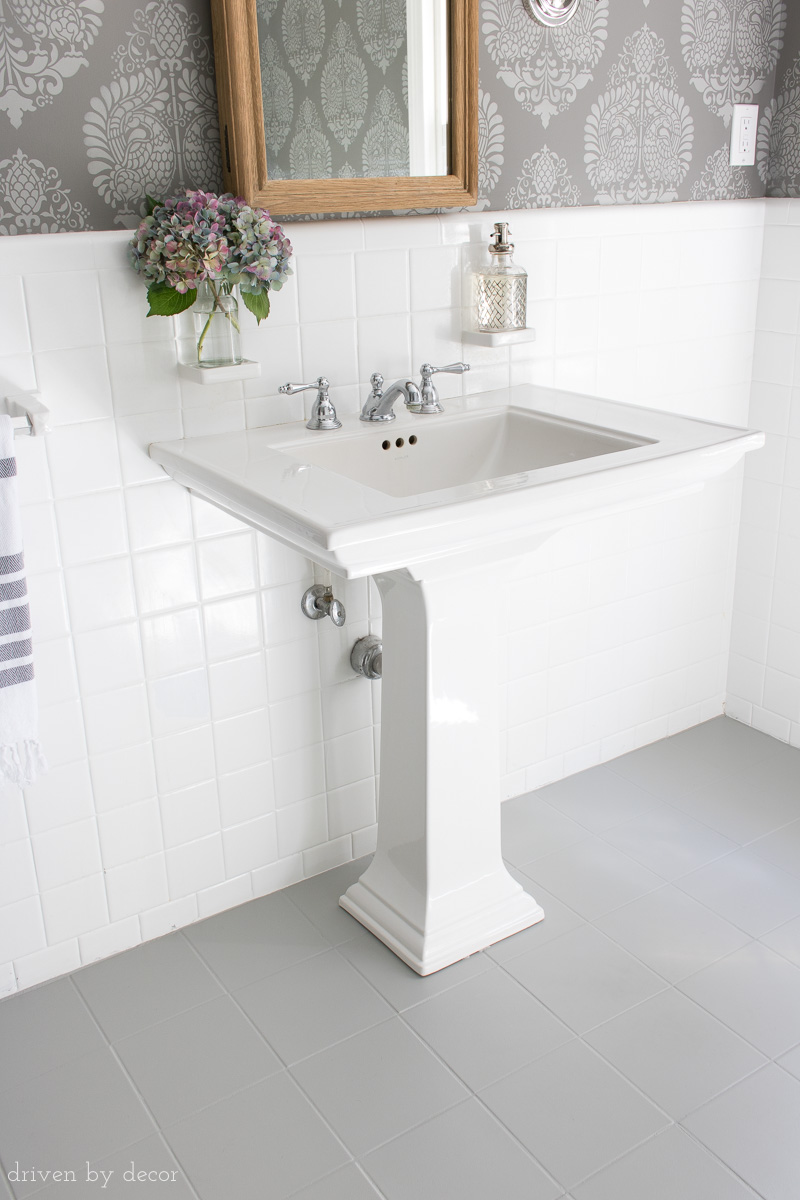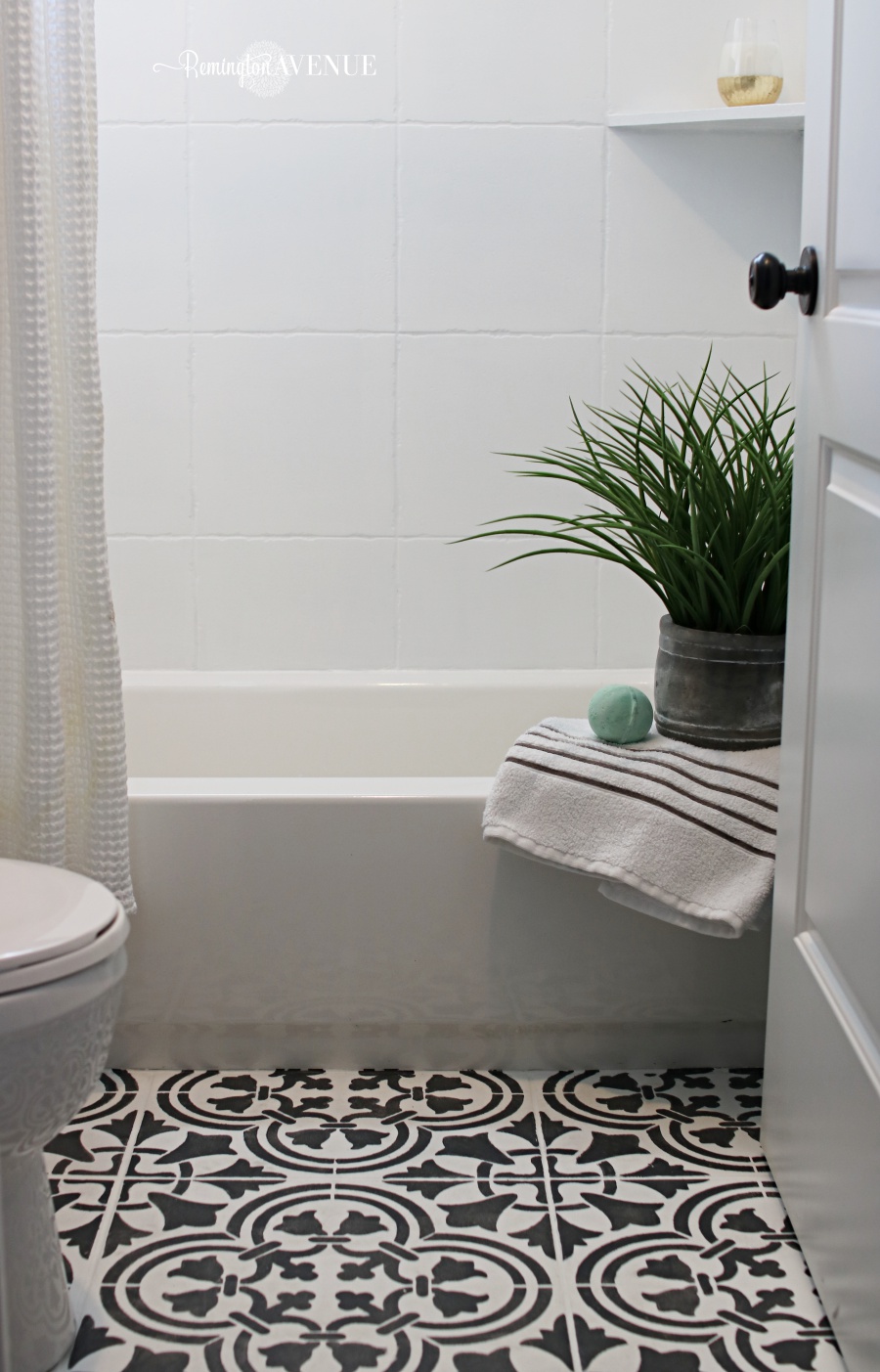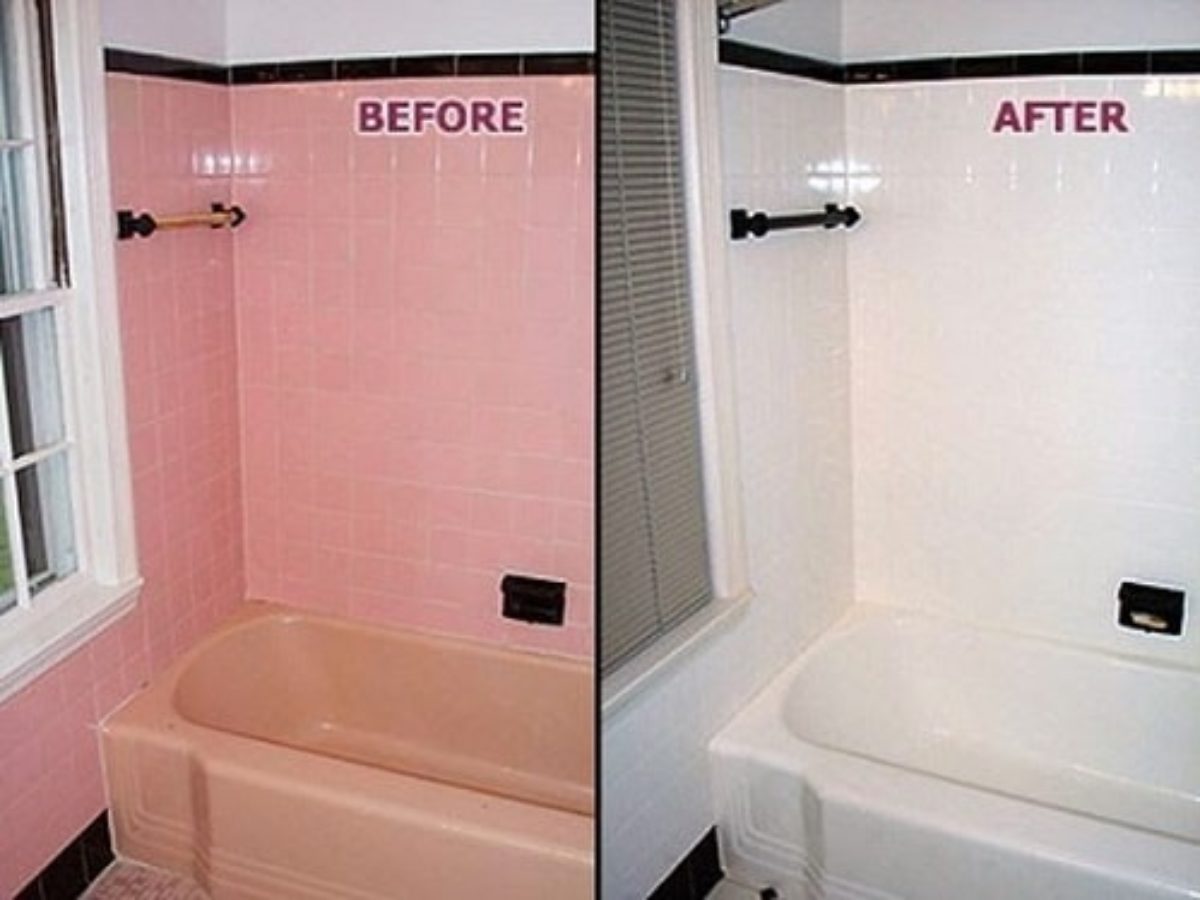Painting old bathroom tile can be a cost-effective way to refresh the look of your bathroom without undergoing a full renovation. However, before diving into this DIY project, it’s essential to understand the process, materials needed, and potential challenges involved.
First, preparation is key when painting old bathroom tile. Start by thoroughly cleaning the tiles to remove any dirt, grime, or soap scum. Use a mild detergent and scrub brush to ensure the surface is clean and free of any residues. Once cleaned, allow the tiles to dry completely before proceeding.
Next, it’s crucial to properly prepare the surface for paint adhesion. This typically involves sanding the tiles to create a rough texture that allows the paint to adhere better. Use fine-grit sandpaper to lightly sand the surface, being careful not to damage the tiles. After sanding, wipe down the tiles with a damp cloth to remove any dust or debris.
Once the tiles are clean and properly prepared, it’s time to apply a primer. Choose a high-quality primer specifically designed for use on tile surfaces. Primer helps to create a smooth and durable base for the paint and improves adhesion. Apply the primer evenly using a brush or roller, and allow it to dry according to the manufacturer’s instructions.
After the primer has dried, it’s finally time to paint the tiles. Select a paint specifically formulated for use on tile surfaces, such as epoxy or enamel paint. These types of paint are designed to withstand moisture and frequent cleaning, making them ideal for bathroom applications. Choose a color that complements your bathroom decor and apply the paint evenly using a brush or roller. Depending on the color and coverage, you may need to apply multiple coats, allowing each coat to dry thoroughly before applying the next.
Once the paint has dried completely, consider applying a clear sealant to protect the painted surface from water damage and wear. A clear sealant helps to prolong the life of the paint and makes it easier to clean and maintain. Allow the sealant to dry according to the manufacturer’s instructions before using the bathroom.
While painting old bathroom tile can be a cost-effective way to update your bathroom, it’s essential to manage expectations. Painted tiles may not have the same durability or longevity as professionally installed tiles, and they may require periodic touch-ups or maintenance over time. Additionally, painted tiles may not be as resistant to chips, scratches, or abrasions as traditional tiles, so it’s essential to handle them with care.
Painting old bathroom tile can be a practical and budget-friendly way to breathe new life into your bathroom. By following proper preparation and application techniques, you can achieve a fresh and updated look that enhances the overall aesthetic of your space. However, it’s essential to manage expectations regarding durability and maintenance and to handle painted tiles with care to ensure they stand the test of time.
How to Paint Shower Tile – Remington Avenue
Refinishing ceramic tile in my bathroom (before and after)
Can You Paint Bathroom Tile? Complete Tips and Guides
How to Paint Tile Floor – Angela Marie Made
Painted Tile Before and After Bathroom makeover, Yellow
How to paint bathroom tile: floor, shower, backsplash
Can Bathroom Tiles Be Painted?
How to Paint Over Ceramic Tile in a Bathroom – Todayu0027s Homeowner
DIY Painted Bathroom Floor
How to PHASE a bathroom reno (keep that shower as long as possible
Nitpicky 6-month painted tile update u2013 House Mix
Related articles:
- Restore Old Bathroom Tile
- Rustic Bathroom Tile Designs
- Vertical Bathroom Tile Designs
- Bathroom Tile Makeover
- Modern Bathroom Tile Ideas
- Blue Glass Mosaic Bathroom Tiles
- Bathroom Tile Shower Design Ideas
- Modern Bathroom Tile Texture
- Modern Bathroom Tile Layout
- Bathroom Tiles Painted Over
Painting Old Bathroom Tile: A Comprehensive Guide
Bathroom tiles can be a costly investment, and over time, they may lose their appeal due to wear and tear. While replacing old bathroom tiles is an option, it can be quite expensive. A more budget-friendly alternative that many people consider is painting the old bathroom tiles. But the question is – can you paint old bathroom tile? In this comprehensive guide, we will explore everything you need to know about painting old bathroom tile.
Preparing the Surface
Before embarking on painting old bathroom tile, it is essential to prepare the surface properly. The preparation process involves cleaning and sanding the tiles to ensure that the paint adheres well and lasts longer. Cleaning entails removing any grime or dirt using a non-abrasive cleaner and letting it dry completely. Sanding helps roughen up the surface for better bonding with the paint.
Can I use any cleaner to clean my bathroom tiles?
No. It is important to use a non-abrasive cleaner that will not scratch or damage your tiles.
How long should I wait before painting after cleaning my tiles?
You should allow enough time for your tiles to dry completely, usually 24-48 hours.
Can I skip sanding my bathroom tiles before painting them?
We do not recommend skipping this step as it helps improve the adhesion of the paint to the surface.
Choosing the Right Paint
Choosing the right type of paint for your old bathroom tile is crucial to achieving a lasting result. You need to select a paint that is specifically designed for surfaces exposed to moisture and water, such as bathrooms and kitchens. Many manufacturers produce paints formulated for use on ceramic and porcelain tiles, providing a durable finish that resists peeling and chipping.
Can I use regular wall paint on my bathroom tile?
No, regular wall paint is not suitable for use on bathroom tiles. It will not hold up to the moisture and humidity levels in a bathroom.
What type of paint should I use for my bathroom tiles?
You should use paint specifically formulated for use on ceramic or porcelain tiles.
Can I use spray paint on my bathroom tiles?
Yes, you can use spray paint, but it is essential to choose a type designed specifically for bathroom tiles.
Applying the Paint
After preparing the surface and selecting the right paint, it’s time to apply it to your old bathroom tiles. To achieve the best results, it’s important to follow the manufacturer’s instructions carefully. You may need to apply multiple coats of paint, with each coat requiring ample drying time before applying another.
How many coats of paint do I need for my bathroom tiles?
The number of coats required depends on the quality and thickness of the paint you are using. Generally, two coats are enough, but some paints may require more.
Do I need to use a primer before painting my bathroom tiles?
It depends on the type of tile and paint you are using. Some paints come with a built-in primer, while others require a separate primer application first.
Can I use a roller to apply the paint to my bathroom tiles?
Yes, you can use a roller or brush to apply the paint, depending on your preference.
Maintaining Your Painted Bathroom Tiles
Once you have successfully painted your old bathroom tiles, it’s essential to maintain them properly to ensure they last long. Regular cleaning using mild cleaners and avoiding abrasive cleaning agents is key to maintaining a lasting finish. Avoid scrubbing the painted surface too hard as this could damage the paint and cause chipping or peeling.
Can I use bleach or other harsh chemicals to clean my painted bathroom tiles?
No, we do not recommend using harsh chemicals on painted bathroom tiles as they could damage the paint.
How often should I clean my painted bathroom tiles?
It’s important to clean your bathroom tiles regularly to prevent the buildup of dirt and grime. You can clean them weekly or as needed.
Can I use a steam cleaner on my painted bathroom tiles?
While steam cleaners are an effective cleaning tool, we do not recommend using them on painted bathroom tiles as they could damage the paint.
Painting old bathroom tiles can be an effective way to update your bathroom without breaking the bank. By following the steps outlined in this guide, you can achieve a lasting finish that resists peeling and chipping. Remember to choose the right type of paint, follow the manufacturer’s instructions carefully, and maintain your painted tiles properly to ensure they last long. With a little bit of effort and creativity, you can transform your old bathroom tiles into a fresh, new look.













